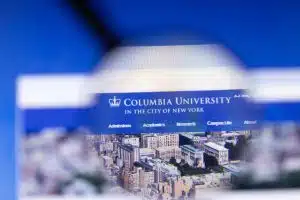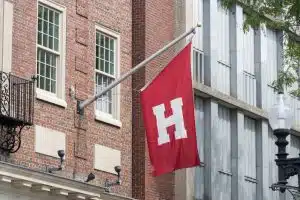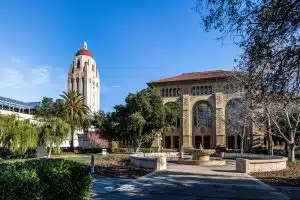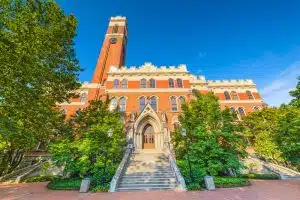How Big Is Cornell University?
Cornell is a premier educational institution with an expansive physical campus, diverse student population, and dedicated faculty and staff. In addition to these elements, Cornell’s academic structure, extracurricular activities, and impactful contributions make it a genuinely vast and influential institution.
As one of the top Ivy League universities in the country, prospective students ask, “How big is Cornell University?”
Understanding the Size of Cornell University
The Physical Size: Campus and Buildings
Located in Ithaca, New York, Cornell’s campus stretches over 745 acres, offering breathtaking views of the surrounding natural beauty. The university’s diverse architecture includes historic buildings, modern structures, and innovative research facilities. With over 260 significant buildings, Cornell takes pride in its beautiful and functional campus, allowing students to engage in a conducive learning environment.
As students walk through the campus, they are greeted by a mix of architectural styles that reflect the university’s rich history. The iconic McGraw Tower stands tall, serving as a symbol of Cornell’s academic excellence. The Arts Quad, with its lush greenery and stunning sculptures, provides a serene space for students to relax and find inspiration. The Engineering Quad, on the other hand, buzzes with energy as students collaborate on groundbreaking research projects.
One of the standout features of Cornell’s campus is its commitment to sustainability. The university has implemented various eco-friendly initiatives, such as solar panels on buildings, green roofs, and a comprehensive recycling program. These efforts contribute to preserving the environment and testify to Cornell’s dedication to creating a greener future.
Student Population: Undergraduates and Graduates
The student population at Cornell University is diverse, vibrant, and multicultural. The university fosters a lively and intellectually stimulating atmosphere with approximately 15,000 undergraduate students and 9,000 graduate and professional students. Cornell attracts students from all around the world who come to pursue their academic and research goals.
At Cornell, students can engage in various extracurricular activities and organizations. From joining student-run clubs focused on specific interests or hobbies to participating in community service initiatives, there is something for everyone. The university also hosts numerous cultural events, allowing students to celebrate and share their diverse backgrounds.
Furthermore, Cornell is proud to provide a supportive and inclusive community. The university offers various resources and support systems to ensure that every student has the opportunity to thrive academically, socially, and emotionally. From academic advising and tutoring services to counseling and mental health support, Cornell prioritizes the well-being and success of its students.
Faculty and Staff: The People Behind the University
Behind the scenes, Cornell is supported and driven by talented faculty and staff members. Boasting over 2,700 full-time faculty across its various colleges and schools, the university is home to accomplished scholars, researchers, and educators. Cornell’s commitment to academic excellence is bolstered by its supportive staff, which ensures a flourishing learning environment.
Cornell’s Faculty members are experts in their respective fields and dedicated mentors who guide students on their academic journey. They encourage critical thinking, foster intellectual curiosity, and inspire students to push the boundaries of knowledge. Students can engage in groundbreaking research, publish scholarly articles, and present their work at conferences with their guidance.
Additionally, Cornell’s staff members are crucial in supporting the university’s operations and ensuring the smooth functioning of various departments. From administrative staff who handle day-to-day tasks to maintenance personnel who keep the campus running smoothly, each member contributes to Cornell’s overall success.
Furthermore, Cornell values diversity and inclusivity among its faculty and staff. The university actively promotes equal-opportunity employment and strives to create an environment where individuals from all backgrounds feel welcome and valued.
Delving into the Academic Structure
Cornell University, located in Ithaca, New York, is a prestigious institution known for its comprehensive educational opportunities and diverse academic structure. With fourteen colleges and schools, Cornell offers a wide range of disciplines for students to explore and engage with.
Number of Colleges and Schools
Among the notable colleges and schools at Cornell University are the College of Arts and Sciences, College of Agriculture and Life Sciences, College of Engineering, and the highly regarded Cornell Law School and Cornell Johnson Graduate School of Management. Each college and school at Cornell has unique offerings and areas of expertise, providing students with many options to pursue their academic interests.
For example, the College of Arts and Sciences offers a broad liberal arts education encompassing literature, history, mathematics, and the natural sciences. On the other hand, the College of Agriculture and Life Sciences focuses on agricultural sciences, environmental studies, and sustainable development, preparing students for careers related to food production, environmental conservation, and public health.
The College of Engineering, renowned for its cutting-edge research and innovation, offers programs in various engineering disciplines, including mechanical engineering, electrical engineering, and computer science. Students in the College of Engineering have access to state-of-the-art facilities and laboratories where they can apply theoretical knowledge to real-world problems and contribute to technological advancements.
Variety of Courses and Programs
Aside from its diverse colleges and schools, Cornell University also boasts extensive courses and programs to cater to its students’ diverse interests and goals. With over 80 undergraduate majors and more than 120 graduate fields of study, Cornell ensures that students have ample opportunities to pursue their passions and receive a well-rounded education.
Students at Cornell can choose from a wide array of academic disciplines, including but not limited to anthropology, economics, psychology, architecture, business, and public policy. The university encourages interdisciplinary studies, allowing students to combine multiple fields of interest and explore the intersections between different areas of knowledge.
Furthermore, Cornell offers various study abroad programs, internships, and research opportunities, enabling students to gain practical experience and broaden their horizons beyond the campus. These experiential learning opportunities provide students with valuable skills and insights, preparing them for successful careers in their chosen fields.
Research Facilities and Laboratories
Cornell University is renowned for its emphasis on research and innovation. The university houses state-of-the-art research facilities and laboratories where students and faculty collaborate on groundbreaking projects. Cornell encourages interdisciplinary research from the physical sciences to the humanities and provides the necessary resources for students to contribute to their respective fields significantly.
For instance, the Physical Sciences Building at Cornell is equipped with advanced instruments and equipment for conducting experiments in physics, chemistry, and astronomy. The building also houses research centers and institutes dedicated to specific areas of study, such as nanotechnology, materials science, and astrophysics.
In addition to the physical sciences, Cornell has research facilities and laboratories in biology, psychology, computer science, and engineering. These facilities enable students to engage in hands-on research projects, collaborate with faculty mentors, and contribute to scientific advancements and discoveries.
Moreover, Cornell University actively promotes interdisciplinary research initiatives, encouraging students and faculty from different disciplines to work together on complex problems and explore innovative solutions. This multidisciplinary approach fosters a vibrant intellectual community and enhances the overall academic experience at Cornell.
Extracurricular Activities and Organizations
Regarding extracurricular activities and organizations, Cornell University truly has something for everyone. From sports teams and athletic facilities to clubs and societies, as well as cultural and artistic venues, students at Cornell have ample opportunities to explore their interests and passions outside of the classroom.
Sports Teams and Athletic Facilities
Sports play a crucial role in campus life at Cornell. The university’s athletics program, Big Red, boasts numerous varsity sports teams competing at the Division I level. These teams represent the university with pride and dedication, showcasing their skills and talents in various sports such as football, basketball, soccer, lacrosse, and more.
But it’s not just about the teams themselves; it’s also about Cornell’s incredible athletic facilities. Schoellkopf Field, the university’s football stadium, is one of the most iconic facilities. With a seating capacity of over 25,000, it provides an exhilarating atmosphere for fans to cheer on their favorite players. Let’s not forget the Lynah Rink, home to Cornell’s ice hockey teams. This state-of-the-art facility is known for its electric atmosphere during games, with fans passionately supporting the Big Red.
Clubs and Societies: Enhancing Student Life
Cornell University goes above and beyond to provide students with various options regarding clubs and societies. With over 1,000 student organizations, there is truly something for everyone.
Whether you’re interested in joining an academic club related to your major, participating in community service organizations to give back to the local community, or embracing cultural and artistic groups to explore your creative side, Cornell has it all.
These clubs and societies enhance student life and provide valuable opportunities for personal growth, leadership development, and networking. They allow students to connect with like-minded individuals who share their interests, fostering a sense of belonging and camaraderie.
Cultural and Artistic Venues
With a rich artistic and cultural scene, Cornell University offers students many opportunities to explore and appreciate various forms of creativity. The Johnson Museum of Art on campus exhibits diverse artwork from different periods and cultures. From ancient artifacts to contemporary masterpieces, students have the chance to immerse themselves in the world of art and expand their horizons.
For those interested in performing arts, the Schwartz Center for the Performing Arts is the place to be. This vibrant venue annually hosts theatrical performances, concerts, and dance events. From student-led productions to professional shows, something is always happening at the Schwartz Center to captivate and inspire audiences.
These cultural and artistic venues serve as a hub for creative expression and a platform for students to showcase their talents. Whether participating in a theater production, displaying their artwork in an exhibition, or performing on stage, students at Cornell can share their creativity with the campus community.
The Impact of Cornell University
Alumni Network: Global Reach
Cornell’s extensive and influential alum network spans the globe and comprises notable individuals in various fields. With successful alums in diverse industries ranging from business and politics to academia and the arts, Cornell graduates make a significant impact worldwide. This extensive network offers valuable connections for current students and showcases the lasting influence of a Cornell education.
Contributions to Research and Innovation
Cornell University has consistently contributed to groundbreaking research and innovation across various fields. From pioneering advances in biotechnology and computer science to groundbreaking discoveries in astronomy and sustainability, Cornell’s research impact is felt globally. This commitment to pushing the boundaries of knowledge is a testament to the university’s intellectual prowess and dedication to solving society’s most pressing challenges.
Economic Impact on the Local Community
Cornell’s significant size and influence have a palpable effect on the local community. The university is an essential economic driver in the region, creating thousands of jobs and attracting visitors worldwide.
With its various research projects and initiatives, Cornell contributes to the economic growth and development of the surrounding area, solidifying its pivotal role as a cornerstone of the Ithaca community.
In conclusion, when delving into the size of Cornell University, it becomes clear that its reach extends far beyond its impressive physical campus. With a diverse student population, faculty and staff dedicated to academic excellence, and myriad academic and extracurricular opportunities, Cornell fosters an environment of immense proportions. Moreover, its impact on alums, research and innovation, and the local community further demonstrates the sizable dimensions of this exceptional institution.
Ready to Make Your Ivy League Dreams a Reality? Let AdmissionSight Guide You!
You’ve just delved deep into the multifaceted world of Cornell University, exploring its sprawling campus, diverse student body, and global influence. Impressive. But perhaps you’re wondering, “How can I be a part of such an illustrious institution?”
That’s where we come in. At AdmissionSight, we specialize in turning your Ivy League aspirations into tangible acceptance letters. Here’s how we can make that happen for you:
Personalized Consultation
Get a one-on-one session with our expert consultants to assess your academic and extracurricular profile.
Tailored Roadmaps
Receive a customized action plan that aligns with Cornell’s admission criteria and the specific courses and extracurriculars that will make you stand out.
Essay Excellence
Our team of skilled copywriters will help you craft compelling essays that meet and exceed Cornell’s high standards.
Interview Prep
Master the art of the college interview with our exhaustive list of commonly asked questions and best-practice responses.
Financial Aid and Scholarships
Navigate the complex world of grants, scholarships, and financial aid with our insider tips and strategies.
So, are you ready to take the next big step in your academic journey? Click the link below to schedule your free consultation with AdmissionSight today. Because when it comes to making your Ivy League dreams come true, size doesn’t matter—but the proper guidance does.









































